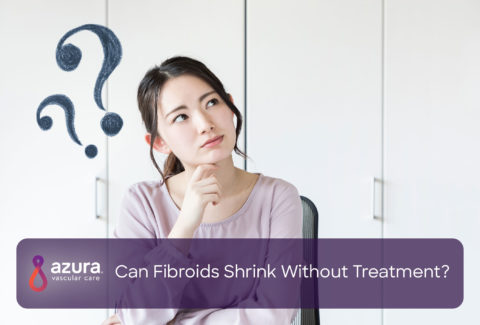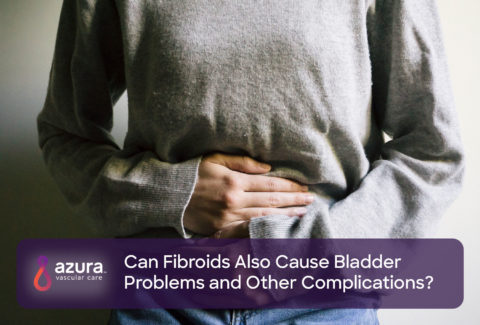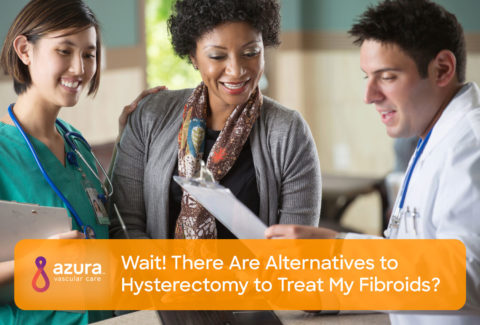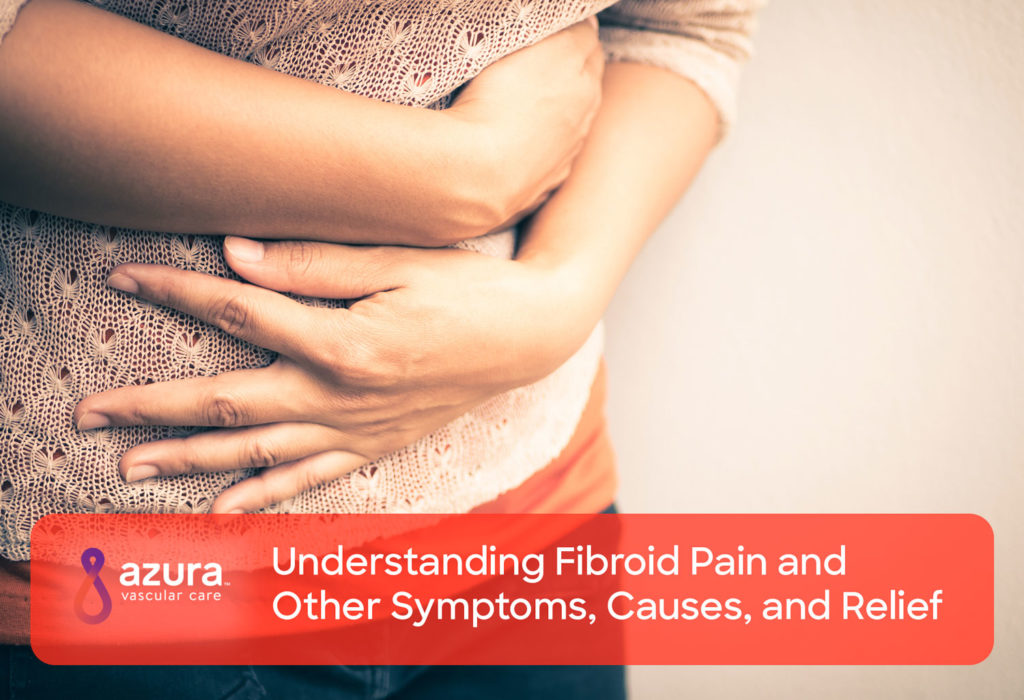
If you’re suffering from uterine fibroids, read on for information about fibroid pain and other symptoms, causes, and most importantly, fibroid pain relief.
Fibroid Pain and Other Symptoms
Many women who have fibroids don’t feel any symptoms or have only mild symptoms. However, there are others who experience severe, disruptive fibroid pain and other symptoms. The signs and symptoms of uterine fibroids may include: (i, ii)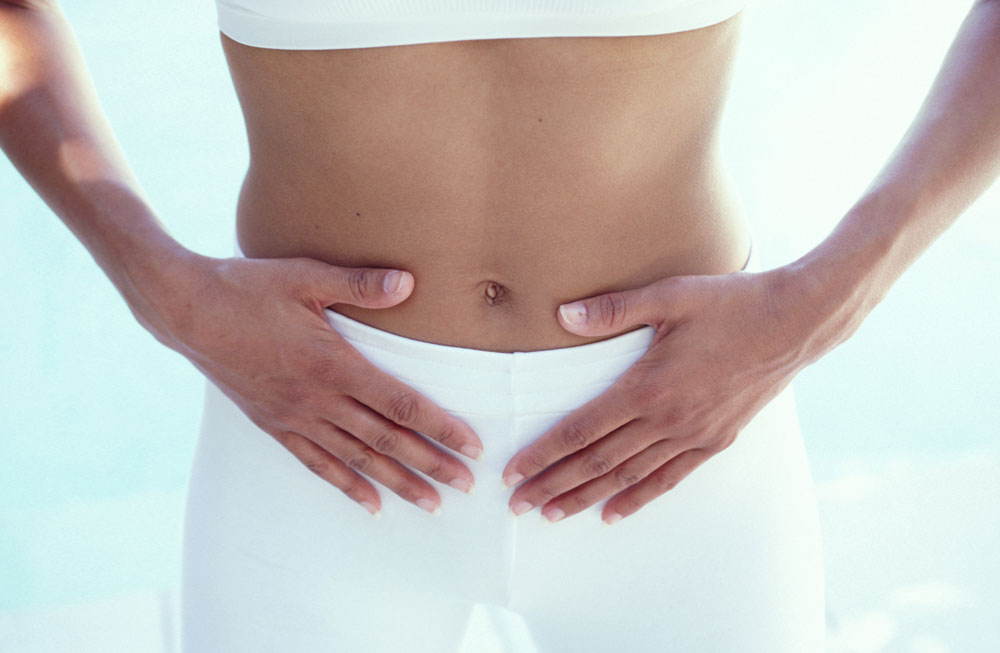
- Heavy or prolonged menstrual periods
- Abnormal bleeding between menstrual periods
- Pelvic pain (caused as the tumor presses on pelvic organs)
- Frequent urination
- A firm mass, often located near the middle of the pelvis
- Feeling of fullness in the pelvic area (lower stomach area)
- Enlargement of the lower abdomen
- Pain during sex
- Lower back pain
- Complications during pregnancy and labor, including a six-time greater risk of cesarean section
- Reproductive problems, such as infertility (very rare)
In some cases, heavy or prolonged menstrual periods or irregular bleeding between periods can lead to iron-deficiency anemia, which may require treatment. (ii)
Possible Fibroid Causes
While the causes of uterine fibroids aren’t clear, researchers think that more than one factor could play a role. The main factors include: (i)
- Hormones (particularly estrogen and progesterone levels)
- Genetics (family history)
Experts agree that fibroids are under the control of both estrogen and progesterone. (i) In fact, they grow quickly when a woman is pregnant and hormone levels are high and then shrink when anti-hormone medications are taken. (i) They also shrink or stop growing when a woman reaches menopause. (i)
Treatment for Fibroid Pain Relief
If you are among the women who experience painful symptoms, fibroid pain relief is possible. There are several treatments that can help, so talk with your doctor about the best way to treat your specific type of fibroids. She or he will discuss several aspects of your health and goals before helping you choose a treatment. Some of these considerations include: (i, ii)
- Your overall health and medical history
- If you want to become pregnant in the future
- The size of the fibroids
- The location of the fibroids
- Your age and how close to menopause you are
- Your tolerance for certain medications, procedures, or therapies
- Your personal preferences
In general, treatment for fibroid pain may include medication or removal surgery, including hysterectomy, which would surgically remove your entire uterus. However, there are other, less-drastic outpatient procedures that can help treat uterine fibroids without actually removing them through surgery.
One such procedure is uterine fibroid embolization (UFE), also called uterine artery embolization. During this popular procedure, a thin tube is used to inject small particles into the arteries that supply blood to the uterus. These tiny particles cut off blood flow to your fibroids, causing them to shrink and die. This technique is very effective for shrinking fibroids and providing fibroid pain relief.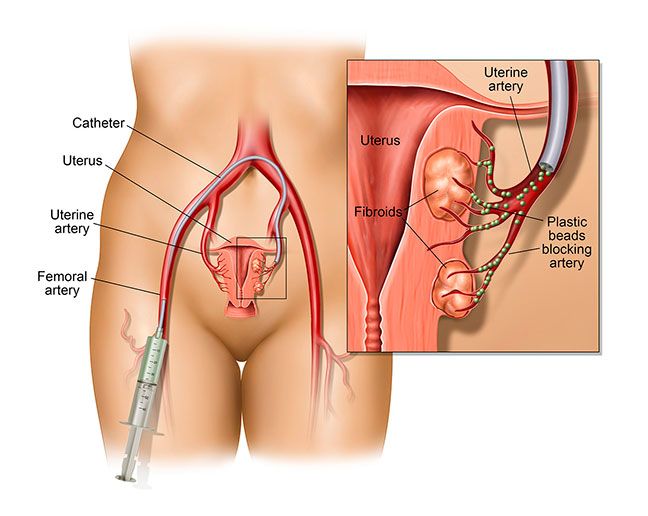
Uterine fibroid embolization is a minimally invasive procedure that doesn’t require a large abdominal incision, which can be painful and can require extended recovery time. The best candidates for UFE are women who: (i)
- Don’t want to have a hysterectomy
- Have fibroids that are causing heavy bleeding
- Have fibroid pain
- Have fibroids that are putting pressure on the bladder or rectum
Learn more about this safe, effective outpatient treatment for uterine fibroid pain management. Download our free information sheet, Understanding Uterine Fibroid Embolization, or call 844-UFE-CARE (833-2273) to schedule an appointment with a vascular specialist.
Sources:
i Office on Women’s Health. (2018, March 16). _Uterine fibroids._Retrieved June 18, 2018, from https://www.womenshealth.gov/a-z-topics/uterine-fibroids
ii UCLA Health. (n.d.). _Fibroids._Retrieved June 18, 2018, from http://obgyn.ucla.edu/fibroids
